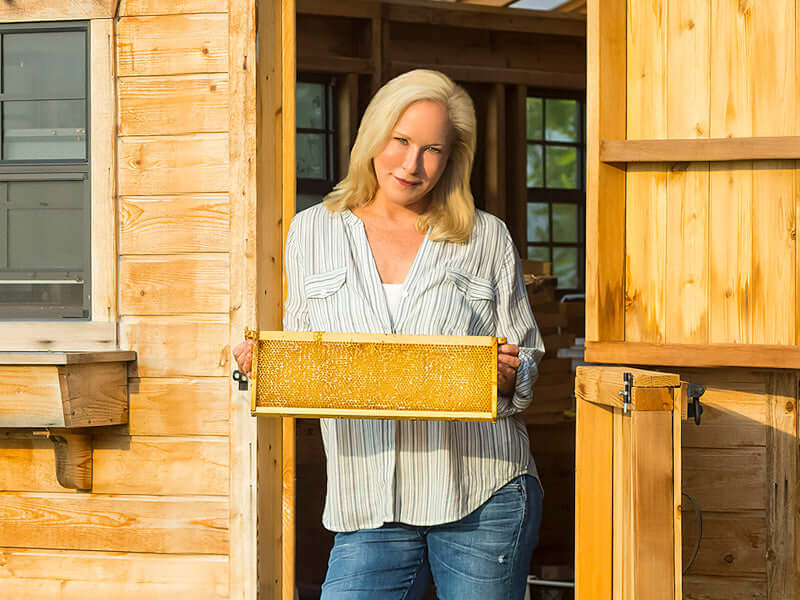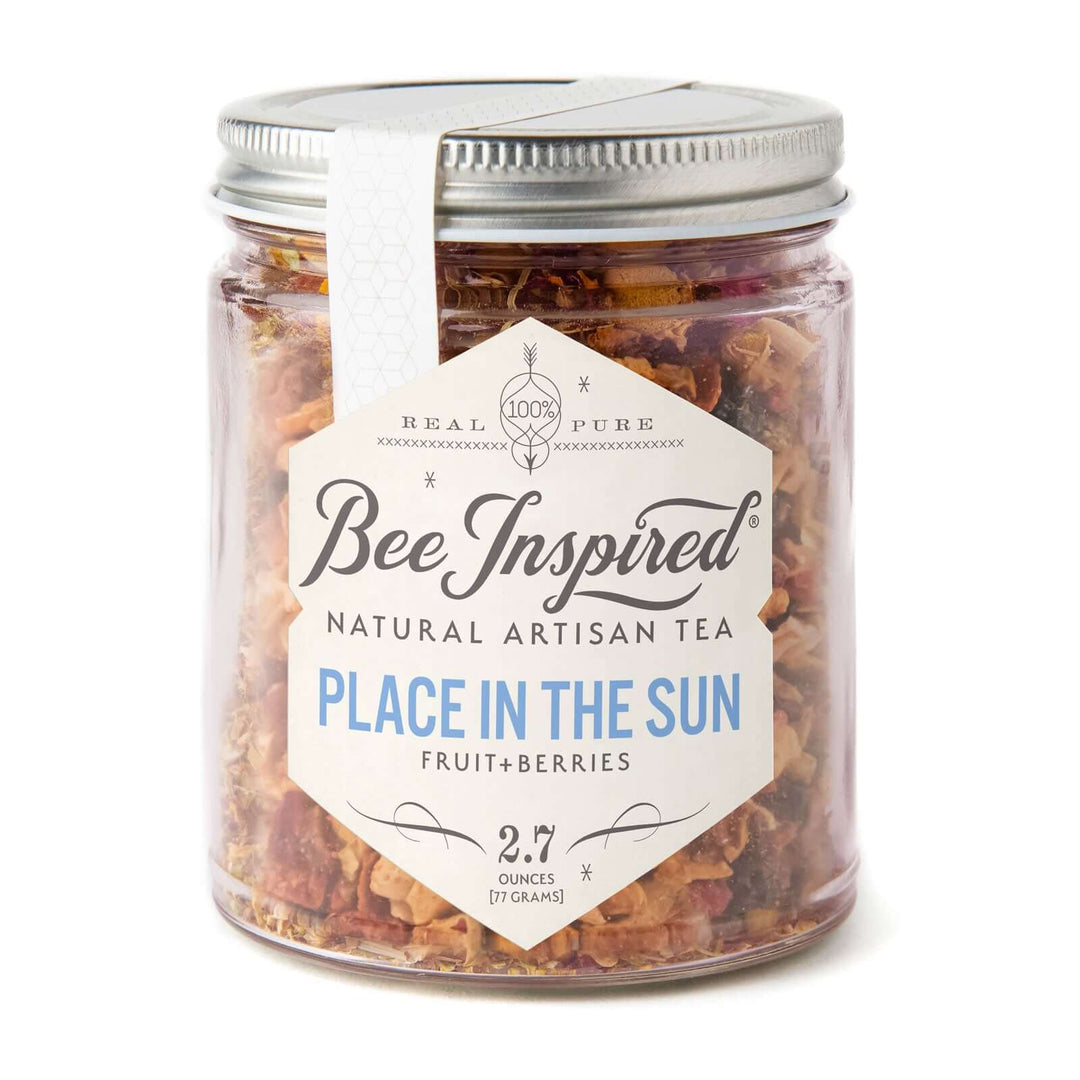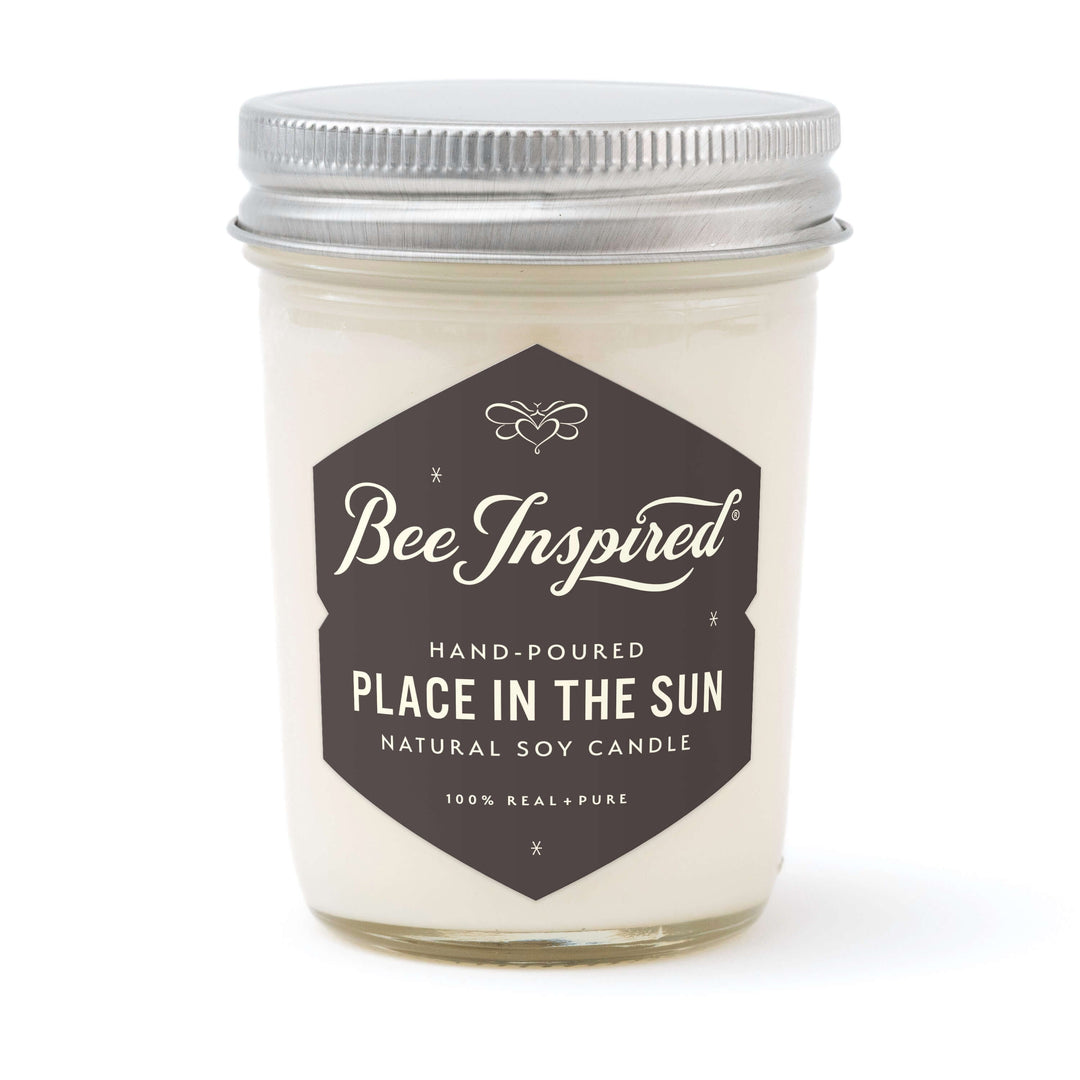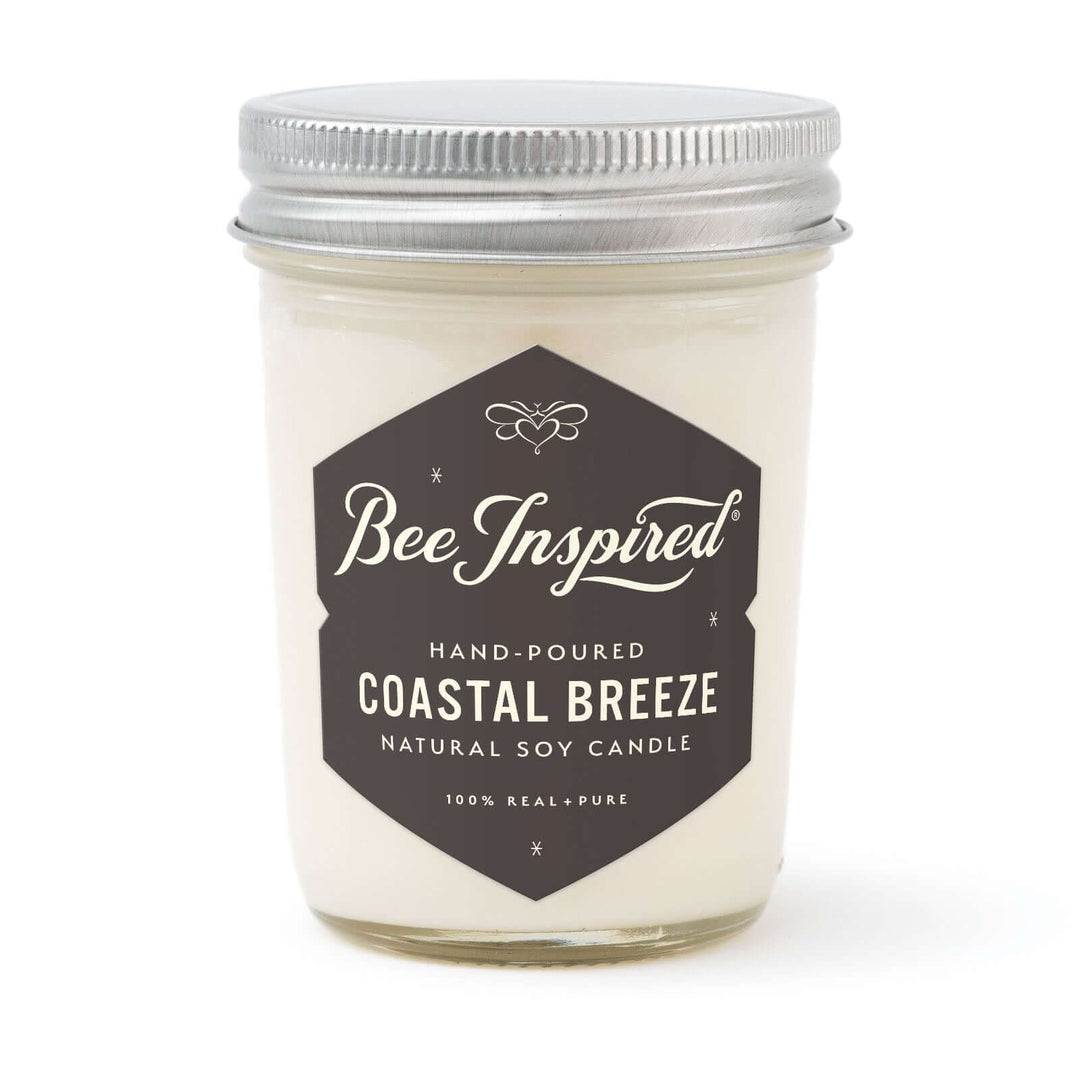Whether you're standing in the honey aisle feeling overwhelmed by choices or simply curious about the sticky sweet substance in your pantry, understanding honey terminology can transform you from a casual consumer into an informed honey enthusiast. This comprehensive honey glossary breaks down everything you need to know about different types of honey, processing methods, and quality indicators.
All of our Eastern Shore Honey is pure, raw, and minimally filtered
What is Honey?
Honey is a natural sweetener produced by honeybees from flower nectar. Bees collect nectar, process it in their honey stomachs, and deposit it in hexagonal wax cells within their hives. Through evaporation and enzymatic processes, this nectar transforms into the thick, sweet substance we know as honey.
Fun fact: Honey is the only food that never spoils. Archaeologists have discovered 3,000-year-old honey in ancient Egyptian tombs that was still perfectly edible!

Raw vs. Processed Honey
Raw Honey: Nature's Unaltered Sweetener
Raw honey represents honey in its most natural state, extracted directly from honeycomb with minimal processing. Here's what makes raw honey special:
Characteristics of Raw Honey
- Never heated above natural hive temperature (approximately 95°F/35°C)
- Contains natural enzymes, vitamins, minerals, and antioxidants
- Includes traces of pollen, propolis, and beeswax
- May appear cloudy or contain small particles
- Crystallizes naturally over time
- Retains maximum nutritional benefits
Health Benefits of Raw Honey: Raw honey contains beneficial compounds that are often destroyed during commercial processing, including:
- Antioxidants that may help reduce inflammation
- Natural enzymes that aid digestion
- Antibacterial properties
- Trace amounts of vitamins and minerals
Processed Honey: Commercial Convenience
Most honey found in grocery stores undergoes some level of processing to improve appearance, extend shelf life, and prevent crystallization.

Kara Brown promises pure, raw honey in every jar
Honey Processing Methods
Filtered Honey
Filtered honey has been strained to remove visible particles like wax, bee parts, and other debris. This process creates a clear, smooth product that flows easily and has a uniform appearance. Filtered honey retains most of its beneficial properties while offering a cleaner presentation.
Pasteurized Honey
Pasteurized honey is heated to 145°F (63°C) or higher to:
- Kill yeast cells that could cause fermentation
- Prevent crystallization
- Create a longer shelf life
- Ensure consistent texture
However, pasteurization destroys many beneficial enzymes and reduces the honey's nutritional value. Most commercial honey brands use pasteurization for consistency and shelf stability.
Ultra-Filtered Honey
Ultra-filtered honey goes through fine filtration that removes nearly all pollen. While this creates an extremely clear product, it also eliminates many beneficial compounds and makes it difficult to trace the honey's origin.

All of our honey is minimally filtered to remove debris and retain benefits
Types of Honey by Source
Monofloral Honey: Single-Source Sweetness
Monofloral honey comes primarily from the nectar of one type of flower, creating distinct flavor profiles and characteristics.
Popular Monofloral Varieties:
Clover Honey
- Light, mild flavor
- Most common type in North America
- Excellent for baking and everyday use
- Slow to crystallize
Manuka Honey
- From New Zealand's Manuka tree
- Strong, earthy flavor
- Prized for medicinal properties
- Expensive due to limited geographic source
- Light citrus notes and aroma
- Popular in Mediterranean regions
- Delicate, floral taste
- Beautiful amber color
- Dark, molasses-like appearance
- Strong, malty flavor
- High in antioxidants
- Popular for medicinal uses
Polyfloral Honey: Nature's Blend
Polyfloral honey (also called wildflower honey) comes from multiple flower sources, creating complex flavor profiles that change throughout the seasons based on which plants are blooming.
- Made from various local wildflowers
- Complex, robust flavor that varies by season
- Reflects local ecosystem
- Usually darker and more affordable than monofloral varieties

Honey Textures and States
Liquid Honey
Liquid honey flows freely and is the most recognizable form. Fresh honey starts in liquid form, and some varieties remain liquid longer than others depending on their glucose-to-fructose ratio.
Crystallized Honey: A Sign of Quality
Crystallized honey (also called granulated honey) occurs when glucose naturally separates from water and forms crystals. This is completely normal and actually indicates pure, unprocessed honey.
- Natural process affected by temperature and glucose content
- Faster crystallization often indicates higher quality
- Different flowers produce honey that crystallizes at different rates
- Can be reversed by gentle warming
Types of Crystallization:
- Fine crystallization: Smooth, creamy texture
- Coarse crystallization: Larger, grittier crystals
Creamed Honey: Controlled Crystallization
Creamed honey (also called whipped honey or spun honey) undergoes controlled crystallization to create fine, uniform crystals. This process produces a smooth, spreadable consistency perfect for toast and baking.
Benefits of Creamed Honey:
- Won't drip or create messes
- Spreadable consistency
- Same nutritional value as liquid honey
- Longer-lasting texture
Comb Honey: The Ultimate Pure Experience
Comb honey is honey still contained in the original beeswax comb. This represents the purest form of honey available to consumers.
Characteristics of Comb Honey:
- Completely unprocessed
- Edible beeswax comb
- Maximum nutritional content
- Unique texture experience
- Often considered a delicacy

You can make your own Pumpkin Spiced Whipped Coffee with our recipe!
Honey Grades and Quality
The USDA classifies honey into grades based on color, clarity, and flavor:
Grade A (Fancy)
- Light color (water white to light amber)
- Mild flavor
- Clear appearance
- Minimal defects
Grade B (Choice)
- Amber color
- Stronger flavor
- Good clarity
- Minor defects acceptable
Grade C (Standard)
- Dark amber to dark color
- Strong, robust flavor
- May be cloudy
- More defects allowed
Important Note: Higher grades don't necessarily mean better nutrition or quality. Dark honey often contains more antioxidants than light varieties.

Tupelo Honey is extremely rare and hand-collected during a brief 2-3 week annual bloom period
Storage and Shelf Life
Proper Honey Storage
Best Practices:
- Store at room temperature (68-72°F)
- Keep containers tightly sealed
- Avoid direct sunlight
- Never refrigerate (accelerates crystallization)
- Use clean, dry utensils to prevent contamination

Learn how to store honeycomb safely
Shelf Life
The Amazing Truth: Pure honey never expires when stored properly. However, commercial honey often includes "best by" dates for quality purposes.
Signs of Quality Honey:
- Natural crystallization over time
- Consistent color (though this can vary by batch)
- Sweet aroma
- No off-flavors or fermentation smells
Choosing the Right Honey for Your Needs: A Quick Reference Guide
Now that you understand the different types of honey and processing methods, here's how to choose the best honey for your specific needs:
For Maximum Health Benefits
Choose raw, unfiltered honey from local sources. Raw honey retains all natural enzymes, antioxidants, and beneficial compounds that processing removes.
For Everyday Cooking and Baking
Filtered clover honey or wildflower honey provides reliable sweetness without overpowering other flavors. These varieties dissolve easily and work well in most recipes.
For Gourmet Cooking
Monofloral varieties like orange blossom, lavender, or buckwheat honey add unique flavor profiles to specific dishes. Match the honey's characteristics to your recipe's flavor profile.
For Spreading and Table Use
Creamed honey offers the perfect spreadable consistency for toast, biscuits, and cheese boards without the mess of liquid honey.
For Medicinal Uses
Manuka honey and raw buckwheat honey are prized for their antibacterial properties and high antioxidant content.

Learn all about baking with honey
Key Takeaways for Smart Honey Shopping
What to Look For
- Minimal ingredient lists (should just say "honey")
- Clear labeling of processing method (raw, filtered, pasteurized)
- Origin information (local is often fresher and may help with allergies)
- Natural crystallization over time (indicates quality)
Red Flags to Avoid
- Honey that never crystallizes (likely ultra-processed)
- Added sugars or corn syrup
- Extremely low prices (may indicate diluted or fake honey)
- Lack of origin or processing information

Our Nectar + Honey Collection is made for honey lovers
The World of Honey Awaits You
Understanding honey terminology empowers you to make informed choices whether you're seeking maximum health benefits, specific flavors, or particular textures. From raw wildflower honey to creamed clover varieties, each type offers unique characteristics and uses.
Remember that the "best" honey depends on your intended use. Raw honey maximizes nutritional benefits, filtered honey offers convenience, and specialty varieties like Manuka provide unique properties. Whatever your preference, you're choosing one of nature's most remarkable and enduring foods.
Ready to explore the world of honey? Start by trying different varieties and noting their unique characteristics. Your taste buds (and your health) will thank you for choosing this natural, unprocessed sweetener over refined alternatives.

Our Honey Tasting Tower contains 5 different varietals for you to try
Frequently Asked Questions
Is crystallized honey bad?
No! Crystallized honey is completely safe and often indicates high quality. You can return it to liquid form by gently warming it in a water bath.
What's the difference between raw and organic honey?
Raw refers to minimal processing, while organic indicates the bees foraged from certified organic flowers and weren't treated with chemicals.
Why is some honey more expensive?
Price factors include processing level (raw costs more), flower source (monofloral varieties are pricier), geographic origin, and production methods.
Can honey help with allergies?
Some people believe local honey helps with seasonal allergies, though scientific evidence is limited. The theory suggests small amounts of local pollen in honey might help build tolerance.
How can I tell if honey is pure?
Look for crystallization over time, check for minimal ingredients (just "honey"), and buy from reputable sources. Pure honey will eventually crystallize naturally.












